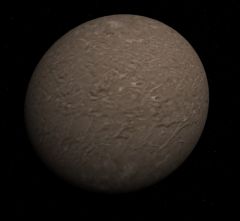Difference between revisions of "Ariel"
Jump to navigation
Jump to search
(Added category.) |
(Added infobox, image.) |
||
| Line 1: | Line 1: | ||
| + | {| cellpadding="2" cellspacing="0" style="margin:25px 0 0 10px; border:3px solid lightsteelblue;width:250px; font-size:90%; font-family:'Arial','Helvetica'; float: right; clear: right;"Template in Orbiter" | ||
| + | !bgcolor="lightsteelblue" colspan="2" align="center" |Ariel | ||
| + | |- | ||
| + | |colspan="2" align="center"|[[Image:ArielOrbiter2016.jpg|240px]] | ||
| + | |- | ||
| + | |colspan="2" align="center"|'''Ariel in Orbiter 2016 with D3D9 client''' | ||
| + | |- | ||
| + | !bgcolor="lightsteelblue" colspan="2"|Designation | ||
| + | |- | ||
| + | |Name||align="right"|Ariel | ||
| + | |- | ||
| + | |width="30%"|Reference body||align="right" width="30%"|Uranus | ||
| + | |- | ||
| + | !bgcolor="lightsteelblue" colspan="2"|Planetary mean orbits | ||
| + | |- | ||
| + | |width="30%"|Epoch||align="right" width="50%"|2010.0 | ||
| + | |- | ||
| + | |width="30%"|Semimajor axis (a)||align="right" width="50%"|190.95×10<sup>6</sup> m | ||
| + | |- | ||
| + | |width="30%"|Eccentricity (e)||align="right" width="30%"|0.0007 | ||
| + | |- | ||
| + | |width="30%"|Inclination (i)||align="right" width="30%"|97.82297512° <br> (1.707333 radian) | ||
| + | |- | ||
| + | |width="30%"|Longitude of the ascending node (LAN, ☊)||align="right" width="30%"|167.692027° <br> (2.926778 radian) | ||
| + | |- | ||
| + | |width="30%"|Longitude of periapsis (ϖ)||align="right" width="30%"|268.4950129° <br> (4.686122 radian) | ||
| + | |- | ||
| + | |width="30%"|Mean longitude (L)||align="right" width="30%"|73.09199674° <br> (1.275696 radian) | ||
| + | |- | ||
| + | !bgcolor="lightsteelblue" colspan="2"|Selected physical parameters | ||
| + | |- | ||
| + | |width="30%"|Mean radius||align="right" width="30%"|578.9×10<sup>3</sup> m | ||
| + | |- | ||
| + | |width="30%"|Mass||align="right" width="30%"|1.27×10<sup>21</sup> kg | ||
| + | |- | ||
| + | |width="30%"|Note||align="right" width="30%"|*Elements given are from Ariel.cfg (Orbiter 2016) | ||
| + | |} | ||
| + | |||
'''Ariel''' is a [[natural satellite]] of [[Uranus]]. | '''Ariel''' is a [[natural satellite]] of [[Uranus]]. | ||
| + | |||
{{UranusSat}} | {{UranusSat}} | ||
| + | {{SolarSystem}} | ||
{{Nsat-Stub}} | {{Nsat-Stub}} | ||
[[Category: Articles]] | [[Category: Articles]] | ||
| + | [[Category:Celestial bodies]] | ||
| + | [[Category:Natural satellites]] | ||
Revision as of 12:18, 2 August 2024
Ariel is a natural satellite of Uranus.
:
| Uranus's natural satellites |
|---|
| Named Satellites:
Ariel | Belinda | Bianca | Caliban | Cordelia | Cressida | Cupid | Desdemona | Ferdinand | Francisco | Juliet | Mab | Margaret | Miranda | Oberon | Ophelia | Perdita | Portia | Prospero | Puck | Rosalind | Setebos | Stephano | Sycorax | Titania | Trinculo | Umbriel Numbered Satellites: |
| See also: Pronunciation key | rings of Uranus |
| edit The Solar System | |
|---|---|
| Central star |
Sun (Sol) |
| Planets |
Mercury - Venus - Earth - Mars - Jupiter - Saturn - Uranus - Neptune |
| Natural satellites |
Moon - Phobos - Deimos - Io - Europa - Ganymede - Titan - more... |
| Add-ons |
Planets - Dwarf Planets - Small objects - Natural satellites - Alternative star systems |
 | This natural satellite related article is a stub. You can help Orbiterwiki by expanding it. |
